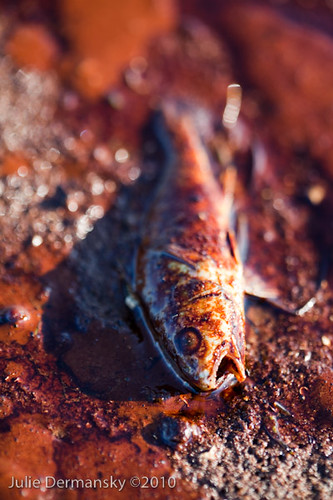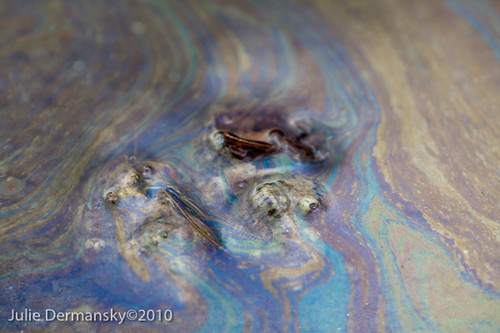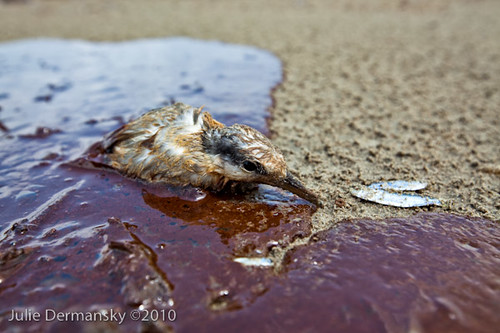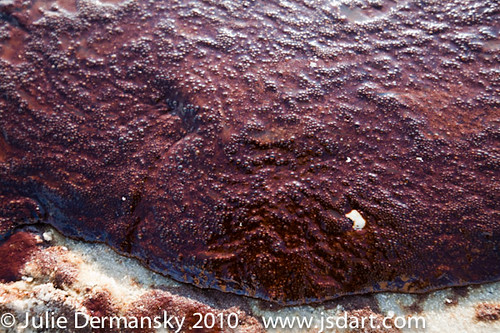The government has made it a felony to get within 65 feet of clean-up operations. Reporters and photographers - including CNN's Anderson Cooper - say that this will make it impossible to take pictures of oiled wildlife, or to accurately convey the effects of the oil spill.
Apologists for the new law say that photographers can simply use a telephoto lense to get the shots.
But as the following photographs by Julie Dermansky show, you can only get emotionally powerful pictures if you can get right up close to the oil:

(Dead fish on Grand Isle)

(Hermit crabs covered in oil on the shore of Grand Terre Island in Barataria Bay)

(Baby tern stuck in an oil patch on Grand Isle beach, with nearby fish abandoned by the bird's mother)

(Oil on the surface of the Gulf of Mexico, blocking sunlight needed by phytoplankton and plants)

(Oil flowing into the Bon Secour National Wildlife Refuge, in Alabama; the white stuff is sand, the thick reddish-brown stuff is oil)
And see this must-see photo from the Atlantic's story on Dermansky, this photo, and the rest of Dermansky's portfolio here.Indeed, preventing reporters and photographers from getting close to the oil spill is a little like forcing protesters into "free speech zones" miles from where the political event is actually occurring.
Is the government going to start having "free reporting zones" where journalists can write about whatever they want and photographers can take any pictures they want ... inside a trailer miles away from the Gulf coast?
Without any large impact zone pictures these kind of pictures are worthless.
ReplyDeletesad ,,,,,,,,,, i see
ReplyDelete